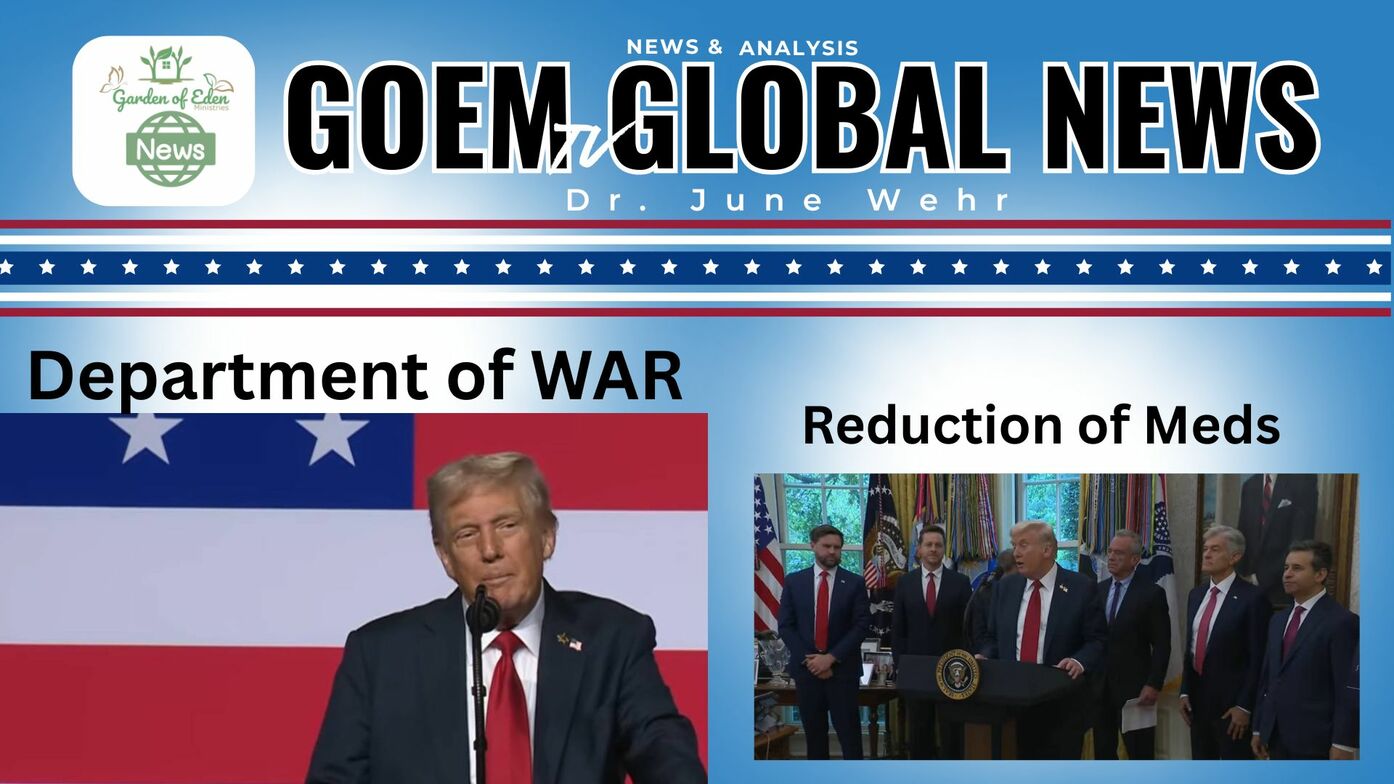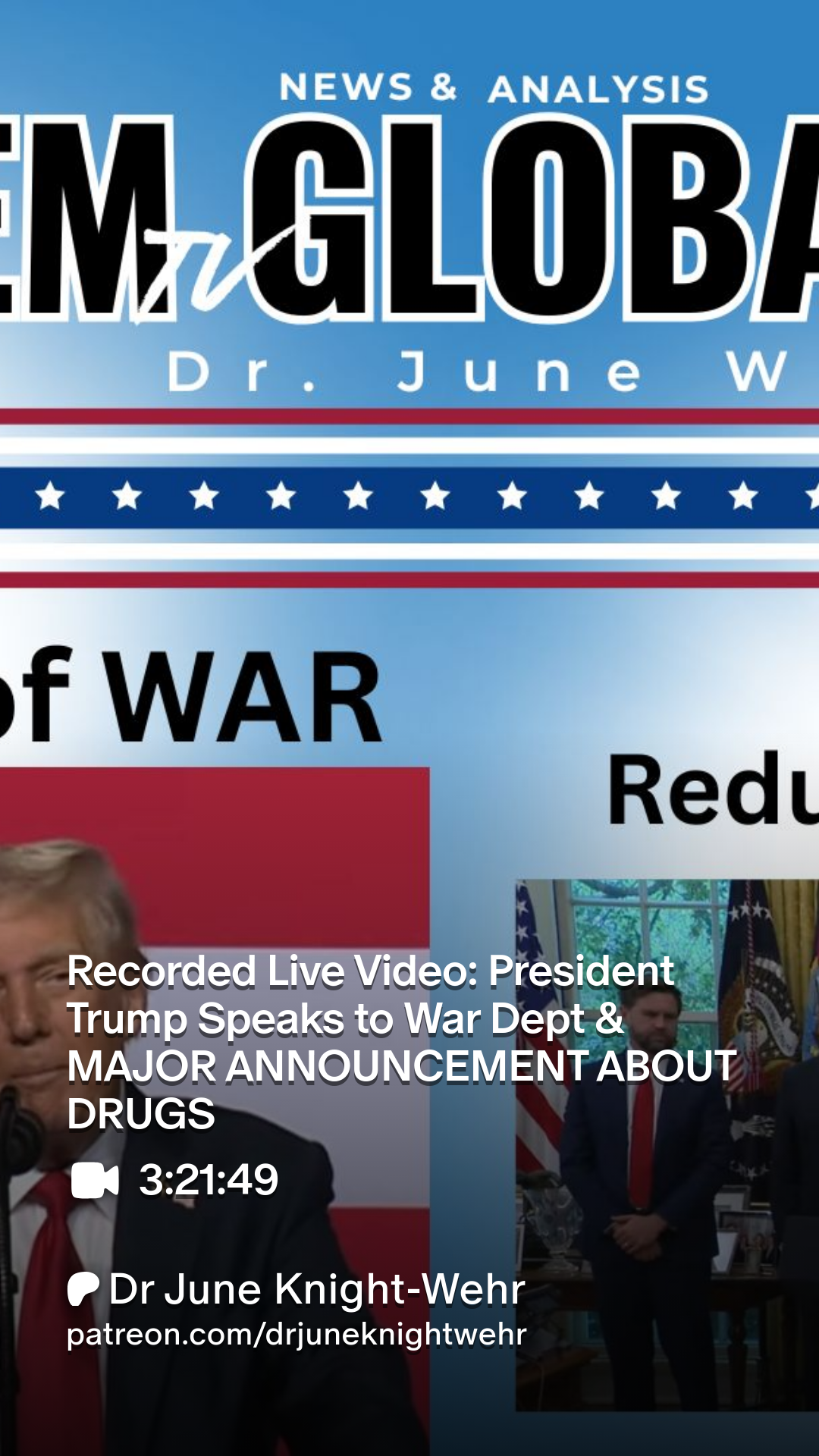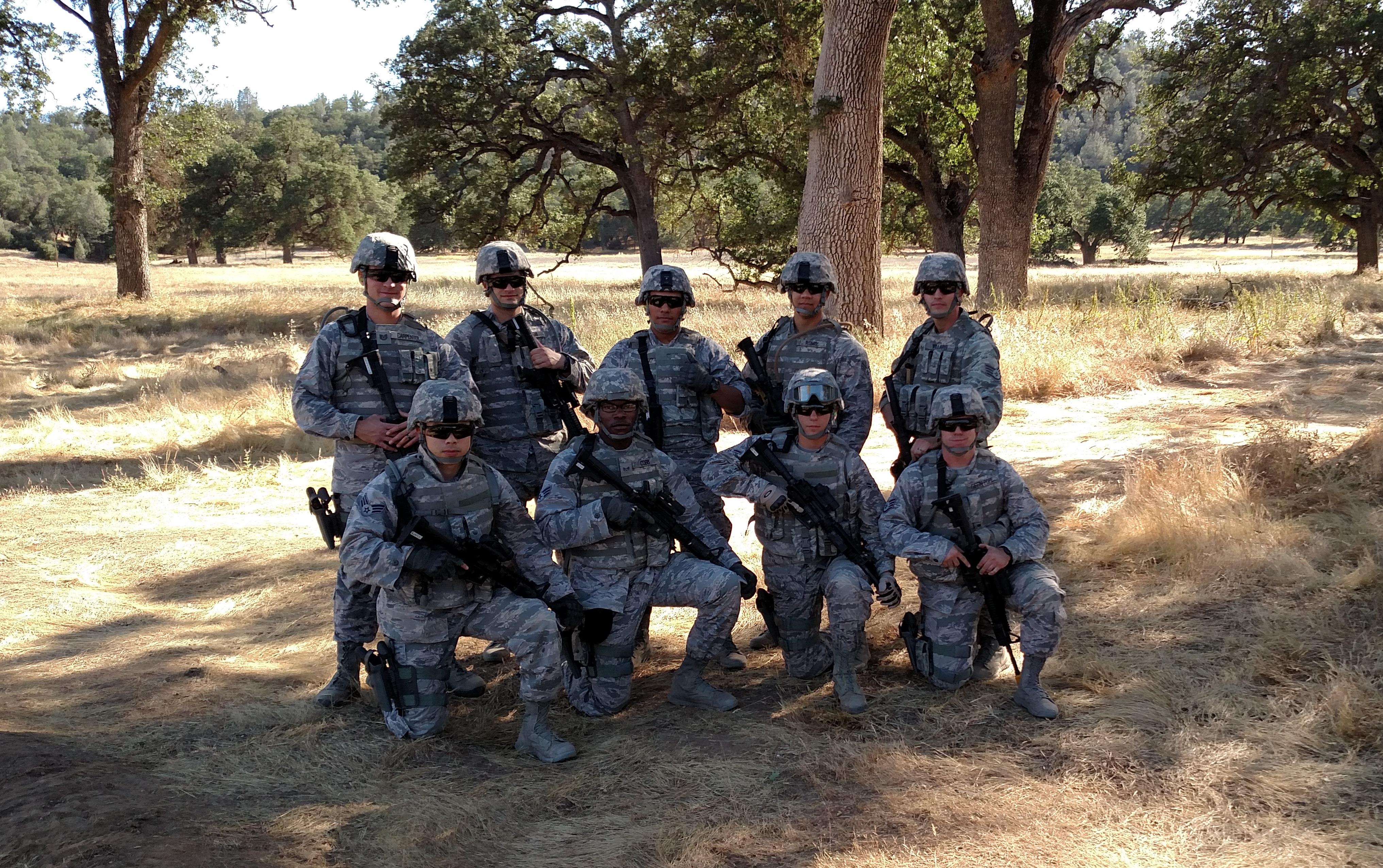President Trump Speaks

- News
- President Trump Speaks

WATCH DR. JUNE'S NEWS
President Trump addressed the 800 Generals from all branches of the military in the United States. Preceding him was Secretary of War - Hegseth - who introduced him. When Trump walked out on the stage, it was interesting to note that the military did not give a warm welcome. They did not clap at all. This shocked President Trump! He addressed it. He began to tell them that he is creating a domestic army called
U.S. Quick Reaction Force (QRF)
- The Quick Reaction Demining Force was an precursor to the more expansive Quick Reaction Force (QRF).
- The QRF retains the core principles of rapid response and humanitarian assistance while expanding to cover a broader range of explosive remnants of war (ERW).
- The QRF's expertise helps partner nations improve the physical security and management of their explosive stockpiles, averting potential disasters.
The Quick Reaction Demining Force (QRDF) was a U.S. Department of State initiative, established in 2000, to rapidly deploy experts for humanitarian demining crises, acting as an enhanced version of an earlier program. It was later evolved into the more comprehensive Quick Reaction Force (QRF), which responds to a wider range of explosives-related emergencies, including landmines, unexploded ordnance, and physical security and stockpile management (PSSM), within 48 hours. The QRF is managed by the Office of Weapons Removal and Abatement (PM/WRA) and provides rapid, expert assistance worldwide.
Now President Trump's new force according to MSNBC: President Donald Trump signed an ominous executive order Monday that calls for a sweeping reorientation of the National Guard around domestic policing. Particularly alarming is Trump’s order that the secretary of defense create a “quick reaction force” within the National Guard for “rapid nationwide deployment” as part of a broader effort at “quelling civil disturbances and ensuring the public safety.” While it’s not clear exactly what form such a force would take, Trump appears to be making an extraordinary attempt to amass autocratic power by misusing the military for policing.
Trump’s Most Dangerous Executive Order
What is Quick Reaction Force (QRF) in Litigation
In military science, a Quick Reaction Force (QRF) is a military unit capable of rapidly responding to developing situations, typically to integrate as a team with allies in need of immediate assistance. They are skilled, prepared, and equipped to respond to any type of emergency. Army units postured as quick reaction forces have a main mission of security and information gathering.
Quick Reaction Force trains with Navy SEALs
HEGSETH SAYS
NO MORE BEARDOS!
'Get on board or get the hell out': Pete Hegseth praised for military directives
Defense Secretary Pete Hegseth speaks to military leaders at Quantico: 'No more beardos'
PRESIDENT TRUMP SPEAKS
ADDITIONAL INFORMATION
What is the Future Soldier Prep Course? | GOARMY
PEACE THROUGH STRENGTH NOAHIDE REFERENCE INFO
- Justice as a foundation for peace: The laws require all societies to establish a system of courts to enforce justice. This is seen as the basis for peaceful and successful interactions within a society.
- Rejection of destructive behavior: The laws prohibit theft and destruction of property, framing these as counterproductive to creating a harmonious society.
- Divine origin: The Noahide tradition teaches that these laws were given by God to all humankind, providing an objective and universal moral framework that is not subject to human whims or subjective judgment.
- Rabbi Schneerson's view (Chabad): The late Rabbi Menachem Mendel Schneerson, a leading voice in the Noahide movement, argued that Jews have an obligation to encourage non-Jews to observe the Noahide laws. According to some interpretations, he stated this could be done through peaceful means, but that "force" could also be used if necessary. This approach is seen by some as reflecting the "peace through strength" idea, where the "strength" is the moral force of the divine laws and, potentially, political or social power.
- Criticism of using force: Many scholars and critics question this interpretation, noting that the traditional understanding of Noahide law focuses on education and example rather than coercion. The concept of using force to impose Noahide law is not a mainstream or universally accepted view.
- Secular origins: The phrase gained prominence during the Cold War and was championed by figures like Ronald Reagan.
- Association with deterrence: The theory asserts that a powerful military can prevent conflict by deterring potential adversaries from taking aggressive action.
- Contrasting interpretations: While the secular and religious uses of the phrase both aim for peace, their methods and underlying principles are different. The secular version relies on military and political power, while the Noahide-related interpretation, especially Schneerson's, is rooted in the moral and divine authority of the laws themselves.
Justice and Righteous Courts are Foundations of Peace
If society is to function successfully, it must impose upon itself a legal structure to ensure adherence to core values. Peace and success among the members of a society can only be fostered if a righteous moral code is used to establish enforceable boundaries of behavior. Every nation, state or province, and municipality is obligated to have a system of courts to uphold the Noahide Commandments. Beyond this, all societies must also establish civil laws according to righteous principles. Their courts must rule justly on civil matters, since these inevitably arise in daily life.
For the good of the society, courts or governments may place necessary legal limits on activities that the basic Torah commandments do not address. This applies as long as the restrictions are acceptable to the population in general. Then, by the Noahide “Law of Courts,” citizens are required to observe the secular law. The courts can apply any non-capital punishment that the public in general accepts for those matters, as long as it is not cruel or unusual. This is called “going beyond the letter” of the Torah Law. It is a common concept in Jewish observance, and it applies to Gentiles as well.
On the other hand, even in the Torah Laws, there are built-in limitations and restrictions on when and how some of them can be applied. For example, in the Torah Law for Jews, there are many sins that make a Jew liable to capital punishment. However, the conditions for when that punishment can be applied are restricted to trials that are conducted by a valid Jewish Sanhedrin court. An actual Sanhedrin only exists at a time when the Holy Temple is built and functioning in Jerusalem.
We still face accusations from people who are largely ignorant about the details and application of the Noahide Code, who don’t want to learn it correctly and who would rather speak slander against a righteous movement that calls into question their anti-Torah dogmas. Therefore, it’s very important for Noahides to know what to answer regarding those challenges. Based on what I’ve seen, the most important one revolves around the Noahide commandment to establish laws and courts, and when and how it applies.
The Rabbinical authorities of our generation have taught that the Torah Laws concerning an obligation for Noahide Courts to administer capital punishment apply only if the majority of the society’s population (1) believes in the One True G-d and (2) specifically observes the Seven Noahide Laws as Divine commandments that they accept upon themselves. In that situation only, an individual who leaves the behavioral boundaries of the society to transgress one of those specific commandments would liable to the specified punishment from a governmentally-empowered Noahide Court.
Sign up for our Newsletter

Est. 2024 - December | The Lord kicked off this ministry between Dennis & Dr. June Wehr to help the end-time church prepare for their final mission. We're all going back to the Garden!
-
Location
Contact
- Phone: +1 (731) 733-0532
- Email: info@goem.us

